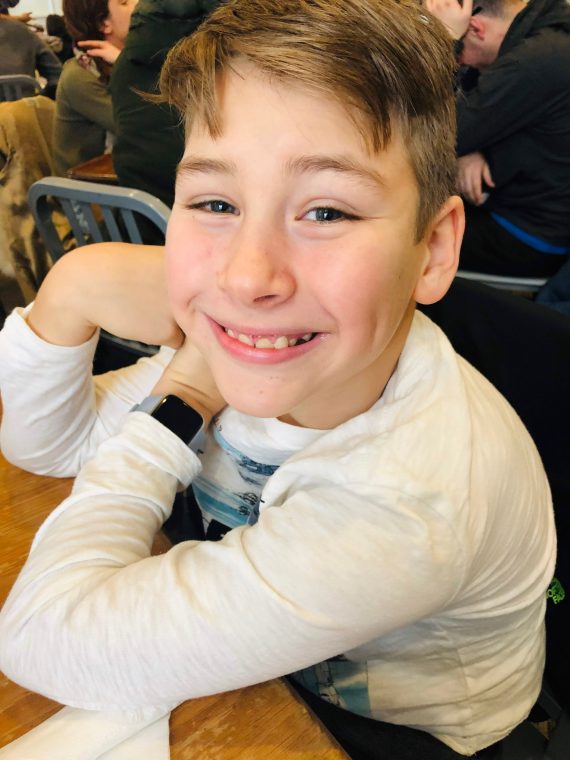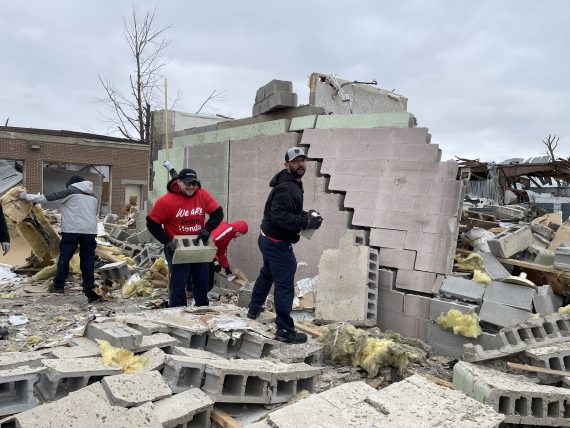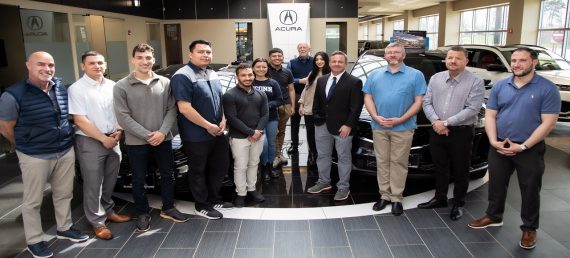Honda Center for Gait Analysis and Mobility Enhancement Continues to Improve the Lives of Children
Three years ago, Honda donated $1 million to Nationwide Children’s Hospital in Columbus, Ohio, to help provide children with neuromuscular ailments the most precious gift of all … mobility.
Today, the Honda Center for Gait Analysis and Mobility Enhancement lab has improved the lives of many children who can now walk, run and enjoy the freedom of childhood.
“The Honda Center for Gait Analysis and Mobility Enhancement has truly impacted the care of our patients — helping navigate improved treatments, both surgical and nonsurgical interventions, as well as driving new research initiatives for improving outcomes,” said Kevin E. Klingele, MD, chief of Orthopedic Surgery and surgical director of Sports Medicine at Nationwide Children’s Hospital. “The information gained from motion analysis on these patients not only improves individual care, but also drives options for future patients.”
While great strides have been made toward treating adults with neuromuscular ailments, treatment for children is more challenging. The way a child’s body moves varies significantly from adults, making it difficult to measure the extent of injury or progress.
“In a typical clinic appointment, a patient’s gait can only be analyzed visually,” said Mallory Rowan, an engineer in the lab. ”But in the lab, we can provide an in-depth analysis of various kinematic and kinetic data that can be evaluated alongside visual assessment. This can lead to better treatment options for the patients.”
At the center, children and adults with mobility limitations, spinal conditions, neuromuscular disorders and congenital and acquired limb conditions have access to in-depth analysis of their gait and motion.
Researchers and clinicians use state-of-the-art instruments such as advanced video recording techniques and 3D motion analysis cameras, force platforms, and electromyography to evaluate physically challenged patients’ movement, abilities, and limitations. Care at the lab is comprehensive and includes assessments from orthopedic surgeons, physical therapists, neurosurgeons, and more to craft expertly customized plans for treatment.
Rowan uses motion capture to build a model skeleton of a patient’s bones to study movement while they walk and run. Force plates are used to evaluate the power generated in their joints, while electromyography sensors are used to review their muscles and when they turn on and off during movement.
“The Gait Lab allows physicians who have potentially run out of options to move their patient’s treatment forward with new technologies to optimize their gait and mobility,” she said. “They can create a complete workup of their current mobility and gait, while having their results reviewed by a multidisciplinary team of specialists. This collaboration often leads to new treatment ideas and hope for the family.”
Nationwide Children’s Hospital and Honda have had a longstanding partnership dating back more than 30 years.
“Since Honda is a mobility company at its core, supporting this new facility at Nationwide Children’s Hospital made perfect sense for us,” said Yvette Hunsicker, vice president for Corporate Social Responsibility and Inclusion and Diversity for Honda. “We are so pleased to see the smiles from the deserving children who are being helped by this lab.”
Currently the Honda Center is a developmental gait analysis lab, primarily seeing children with neuromuscular diagnoses. In the future, the center hopes to include a spine and sports lab. These labs will focus on patients with scoliosis and other spinal conditions, allowing the lab to continue its work as a destination for those in need of specialized mobility evaluation and treatment.
Hudson Bartos: A Honda Center for Gait Analysis Success Story
The work enabled by Honda’s commitment to Nationwide Children’s Hospital has directly impacted the quality of life for patients like Hudson Bartos and his family.
Hudson had a stroke at birth leaving him with left hemiparesis, or unilateral paresis, a weakness of one entire side of the body. The stroke was caused by a genetic condition that increases the likelihood of an individual forming dangerous blood clots.
Over time, Hudson progressed well with regular Botox injection treatments, which helped to relax the muscles in his leg and stretch his heel cord to assist with movement. However, persistent growth spurts made it necessary to increase the frequency and dosage. As a result, Hudson’s parents started investigating surgery as a more permanent solution.
To determine if Hudson was a good candidate and would benefit from surgery, he was evaluated at the Honda Center for Gait Analysis and Mobility Enhancement. Hudson had successful surgery in May 2019 – days shy of his 11th birthday.
Today, Hudson is a very active 12-year-old. He likes many sports and teams, especially football and basketball – with the Ohio State Buckeyes at the top of the list.



